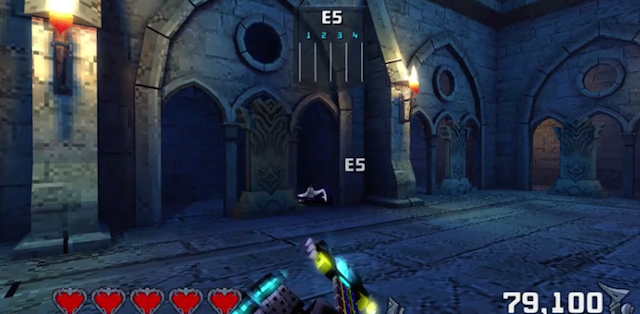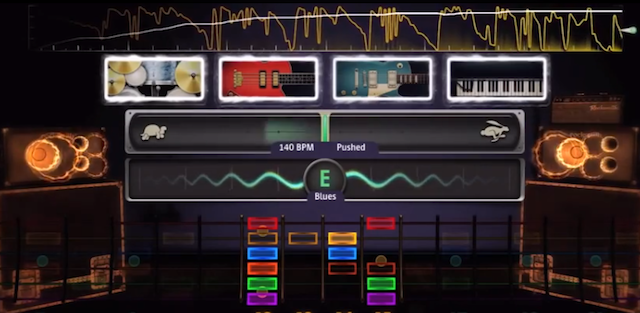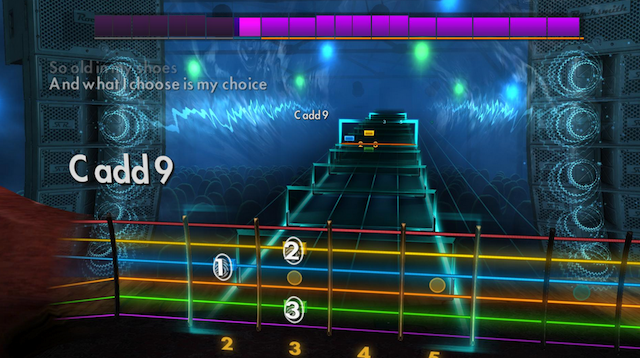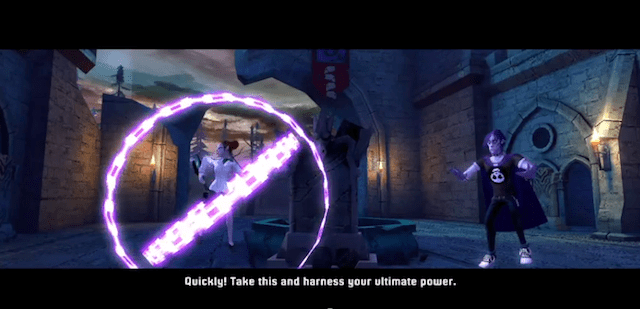You had me at kazoo.
Rocksmith started a new chapter in the evolution of the authentic music game genre when it first launched in 2012, and it continues to play on a field of its own making. This game has been a mystery for me since it wasn’t really showcased on the E3 show floor to the public, so I wasn't quite sure what the major differences would be from the original game.
One issue with the first game that has been vastly improved in Rocksmith 2014 is the need for perfection. You no longer need to play notes directly on the fret during single-note melodies to have it register in the game. It seems the developer finally realized that everyone playing this game might not be a musical genius robot.
The Guitarcade is also back with a vengeance. Each mini-game is not only fun, but they are more retro and have actual story aspects to them! "Return to Castle Chordead" is the most impressive, with it playing like the rail shooter House of the Dead, fully equipped with boss battles and cut-scenes.
Along with the improvements made to the Guitarcade, the Riff Repeater mode is the most improved feature and one of my favorite things about this game. You don’t have to go into separate menus and wait for loading screens to practice your favorite songs anymore. All you have to do is hit a button and the Riff Repeater menu pops up, giving you full control of how you want to play the song. It encompasses every individual learning mode from the original game, allowing you to change the speed, error tolerance, level of difficulty, and much more, all in one place without having to leave the song, which is a huge time-saver.
The only major issue with Rocksmith 2014 is the tuning mechanic. I believe they went a step too far by implementing two categories of E Standard concert tuning, A440 and A441. Going between songs with A440 tuning and A441 can be incredibly frustrating at times. Even though the pitch between the two E Standard keys is only slightly different, having to re-tune because of the two categories is almost game-breaking because of the in-game tuning mechanic. Almost every time I had to re-tune my guitar, the tuner would fail to register the string I was playing long enough to determine if it was in tune.

At one point, it took me almost five minutes to tune my guitar because of this, which is unacceptable for this game and any game really. It is especially unacceptable seeing as the tuning mechanic in the first game was perfectly fine. The only perk is that once you tune your guitar to a specific key you won’t have to tune your guitar again if you switch to a song in the same key. Of course, most songs fall under the E Standard key so you’ll run into the A440 vs. A441 issue far too often for this improvement to matter as much as it should. The best way to avoid having to deal with the tuning gauntlet is simply to play one of Rocksmith 2014’s newest game modes, Session Mode and Nonstop Play Mode.
Session Mode is the most impressive feature of Rocksmith 2014. It allows you to select from a wide array of 75 A.I.-controlled musical instruments to create a virtual band capable of virtual jam sessions. You can choose up to four different AI instruments to accompany your guitar stylings, including electronic drum kits, a plentiful selection of cartridge keyboards, the sounds of the ocean, and… a kazoo. These are only a small example of what’s available to you in this amazing game mode and the only thing more impressive than the selection of instruments is what you can do with them.

You can control the tempo, volume, and pan of each instrument, and as you play your guitar, each instrument will match your pace accordingly. I highly recommend the kazoo, rain sound, and gold cartridge square combo. There is a mission system that helps you progress in Session Mode and learn how to use it to its full potential if you feel a bit lost. Even if you choose not to participate in the tutorials, there are always recommended chords to play at the bottom of the screen that can help you dive into your virtual jam session.
Nonstop Play mode has essentially replaced the career mode from the last game. I couldn't care less about having a career mode in a game like this, so it’s nice to have the ability to play songs of my choosing back to back. Nonstop Play Mode allows you to create your own setlist and set a time limit you would like to play for. Being able to set these kind of parameters will really help out people who want to schedule some form of practice for themselves or just jam out for hours on end.

If you are looking for an educational and fun way to learn guitar, Rocksmith 2014 can definitely give you what you want. The tutorial videos have been upgraded, the Guitarcade is more badass, and the riff repeater mode is flawless. The only downside is tuning ,which can be a bit too overbearing at times. For those of you who loved the original Rocksmith setlist, you can import all of the on-disk songs from the last game for $9.99, but any DLC purchased for the original game will automatically sync to your game. Rocksmith 2014 may not have party-game appeal due to its strong focus on educating the player, but it definitely has jam session appeal.
-
The Guitarcade games!
-
New songs and DLC
-
Riff Repeater
-
Session Mode
-
Still not a great party game
-
Tuning can be a bit too tedious











